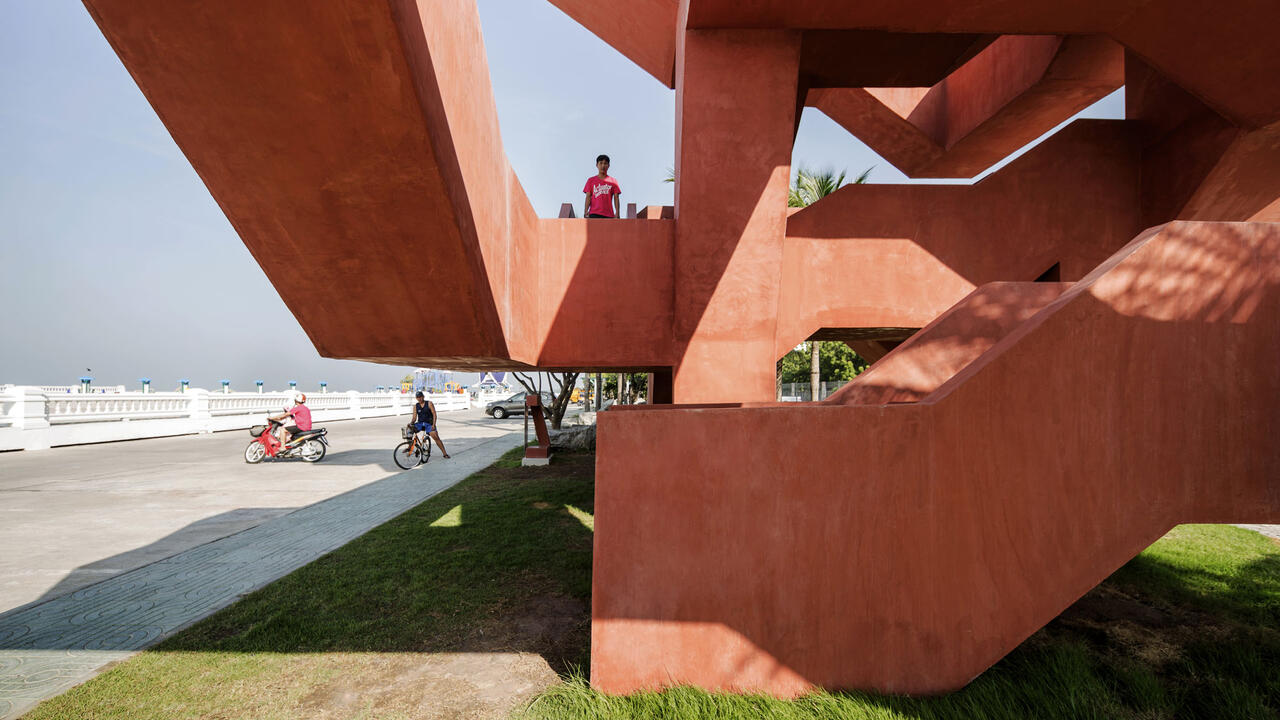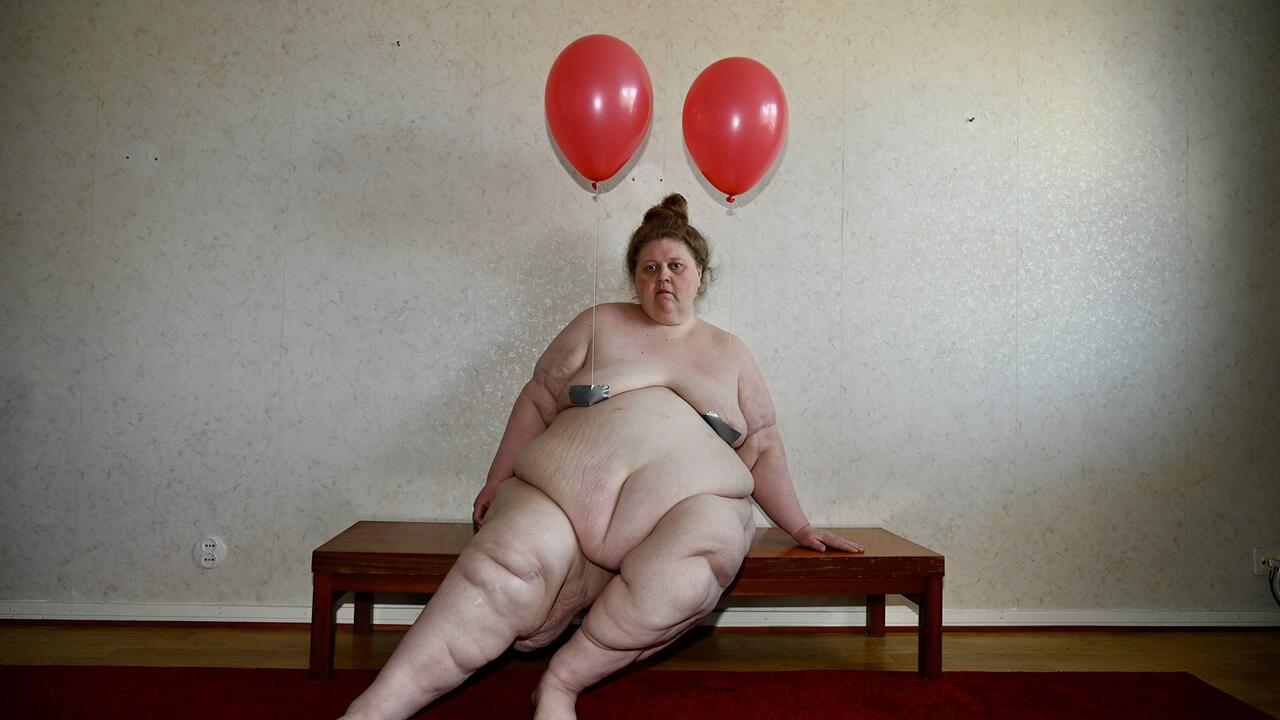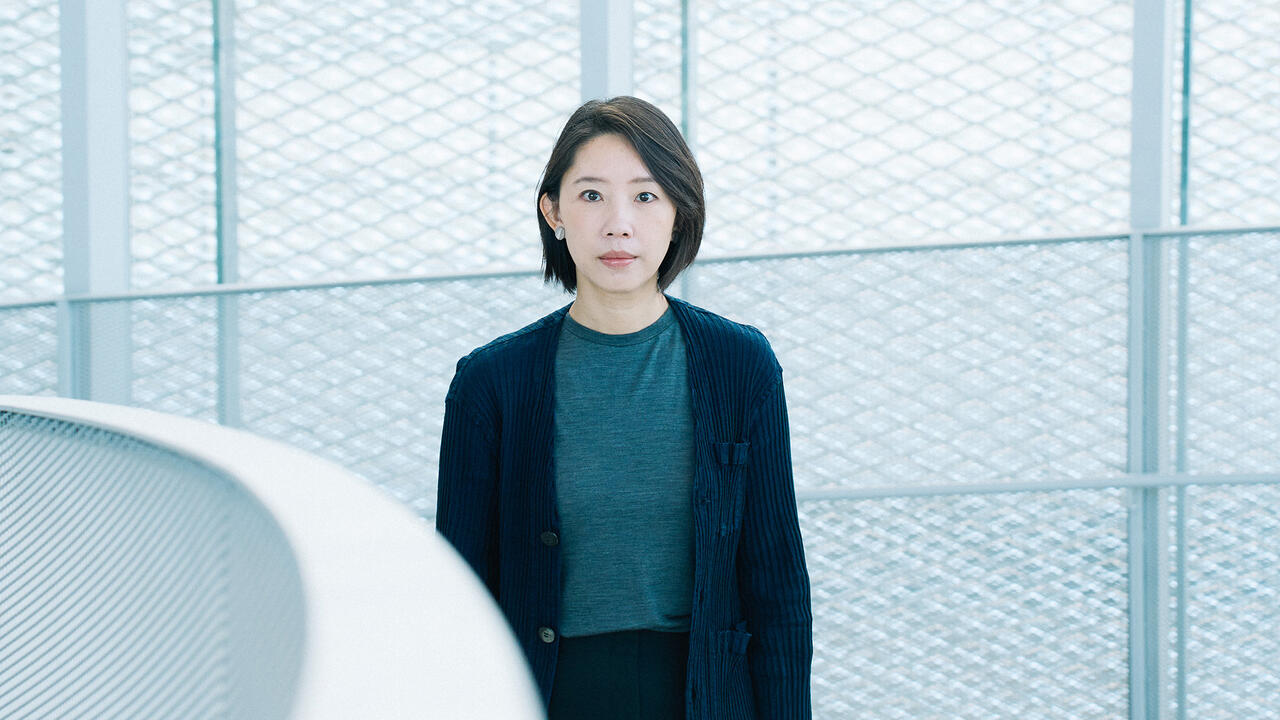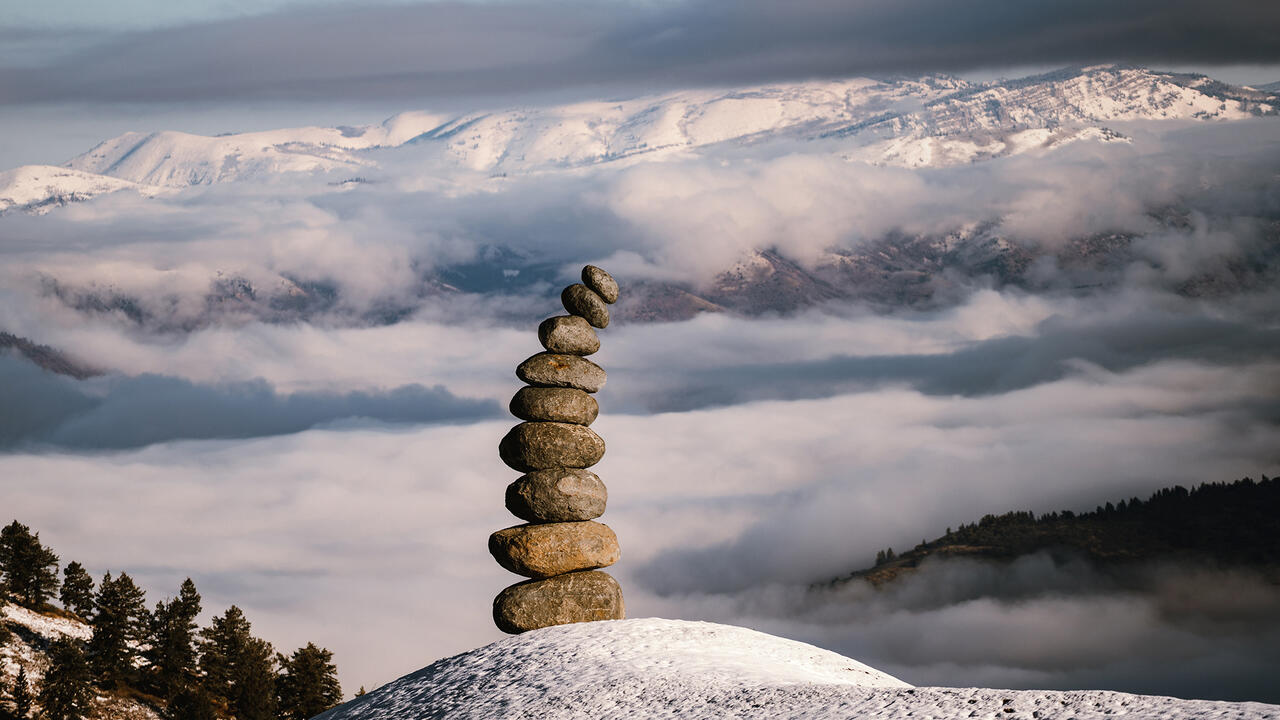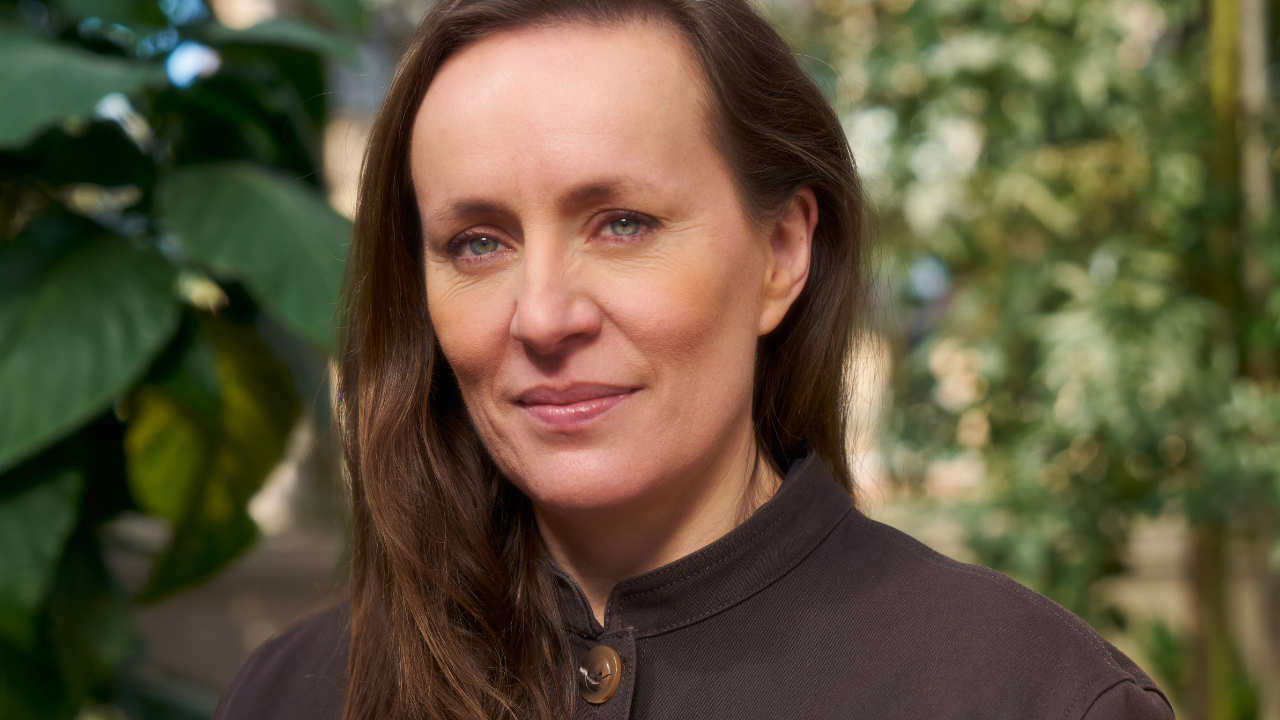An Occupied Biennial
For the 7th Berlin Biennale Forget Fear, co-curators Artur Zmijewski and Joanna Warsza invited members from Occupy Movements around the world to take over the ground floor of the Kunst-Werke. How are the members fairing? Berlin-based critic Raimar Stange sat down to talk to Noah Fischer, an artist-activist based in New York. In addition to occupying Forget Fear, Fischer will be participating in this fall's Steirischer Herbst festival in Austria.
For the 7th Berlin Biennale Forget Fear, co-curators Artur Zmijewski and Joanna Warsza invited members from Occupy Movements around the world to take over the ground floor of the Kunst-Werke. How are the members fairing? Berlin-based critic Raimar Stange sat down to talk to Noah Fischer, an artist-activist based in New York. In addition to occupying Forget Fear, Fischer will be participating in this fall's Steirischer Herbst festival in Austria.

Raimar Stange: Why is it interesting for the Occupy Movement to work in the context of the Berlin Biennale?
Noah Fischer: First of all, I’d just like to make it clear that these answers are my own opinions as an Occupy Museums member – I am not a spokesperson for the entire group.
The Occupy Movement is not fixed but rather constantly transforming and looking for new physical and intellectual spaces in which to spread our message. We actually develop the message and our new culture as we go. In the beginning, it was important to come together in city squares – in public space – and to develop a movement together ‘from the ground up’ which was autonomous from institutions.
In this way, we met each other somewhat outside of the persuasive framework of Neo-Liberalism and inside a space full of possibility. Then the initial public squares became less helpful – even corrupted – and eventually we lost them by force or through a withering away. But we also matured and refined the Occupy message about economic inequality in many new directions, for example in arts and culture with Occupy Museums and other groups.
People in these various groups began to experiment with a variety of tactics: new direct-action strategies and games in the streets, legal challenges to US laws or even engagement with media and institutions where allies had come forward. So the process has been open source and simultaneous: the Occupy Movement cannot afford to limit itself to a concept of political purity with absolute non-engagement. That’s what I mean when I say we’re part of a de-centered movement – a movement taking on a new post-1960’s model.
Personally, I feel that there is really no possibility to stand outside the economic disparity that we protest because this disparity is deeply structural. So, it makes sense to engage with institutions and go beyond ‘us and them‘, to experiment and to find solutions or steps forward here and there.
Last fall, at the height of Occupy Wall Street, Joanna Warsza came to New York and experienced the Movement just as it was forming into strong new groups. She saw some Occupy Museums actions in New York and asked me – without mentioning the Biennale – what would happen if an institution was willing to work together on our terms? I said that it would be a walk through the mud because obviously there are conflicts of interest in the form of power and financial hierarchies in all or most cultural institutions.
Yet I think there are two points that convinced the movement to work with the Berlin Biennale – after many meetings and discussions. Firstly, this cooperation represented a real sharing or offering of resources. The Biennale flew ten of our members from New York and had invited activists from movements all over the world as well. On a basic level, this exhibition was a chance to organize on a global level face to face – and that is what indeed happened.
Secondly, we knew that in some ways the Biennale represented an ideal art institution – at least from the American perspective. In the USA, the largest museums get about 15% of their funding from the government while the rest is corporate or comes from the super rich 1%. The private markets completely dominate our culture in the USA. Part of what we are fighting for is for art to be valued as part of the commons, as part of the shared treasures which support and are supported by society.
The Berlin Biennale is almost completely funded by the government, and we wanted to interact with this model, learn about it and see what was possible. It turned out to be very complicated politically, artistically, socially. I am now full of questions and also hope. We made new friends from international movements and helped to conduct an experiment with culture and politics that may lead to more good questions and to more action. We’ll see what happens next.
What do you see as the main difference between an activist and an artist?
Right now I am not interested in these definitions and actually don’t accept them. They must open up and change to be useful in the world we are in and we are heading towards. To what extent are these fields or identities defined by the Neo-Liberal system itself?
I used to call myself an artist – in the context of getting an MFA, working in academia, showing at galleries, art fairs, feeling part of art history. Then I entered into a people’s movement where the word ‘artist’ meant very little because creativity was everywhere, shared and initiated by many. We weren’t interested in the trappings of the market or in marketing our creativity, but rather in opening up the space for more creative action.
The same goes for activists. Of course, there is a particular specialized activist language and résumé. But in the movement context, I realized that everyone has a voice and can act autonomously and together, wandering in the direction of justice.

What I am interested in now is the spark needed for action. When does a person who is deeply conditioned to produce and to consume make the move to go his or her own way? Or to join others in protest or in creating a new experimental culture? This illusive spark helped ignite Occupy, 15M and also movements in Cairo, Libya, Syria. Sometimes, people do reach a moment where long-held fears can dissolve, and I think this is also a creative state.
I don’t want to say that wisdom and experience should be ignored or that people who call themselves artists or activists should be shunned: not at all. The movement needs tools and strategies – people share them from their past efforts. These are the riches of the movement. But definitions need to be questioned – maybe we can even let them go in order to move on.
In the information age, we have a class of people who are specialists and ‘experts’ in politics, activism, art, economics, sports and many other fields. They comment and also reinforce a mental status quo regarding culture and political correctness. I’m interested in a naïve position that is more immediate but also highly autonomous and experimental – whereby I am able to act and to play in the world.
What was your best moment during the Berlin Biennale?
It has been a pleasure to be here with many special moments. Some were ‘high’ while others were quite low: down in the mud negotiating a way forward in communication and making mundane decisions together. These were also best moments for me.
Our action at the Pergamon Museum altar was also important. It was not an Occupy Museums action but rather planned by an international group, which included people from Spain, Poland, Russia, Poland and the USA who had met in Berlin. The action was responding to colonialism which is still a backdrop for cultural symbols internationally.
First, we created a fake university to gain free access to the museum for a large group. I played the professor for a class on the ancient roots of horizontalism. Once inside, we gathered on the alter and conducted a performance which included a song in ancient Greek sung by Joulia Strauss and played with a lyre accompaniment. We shouted statements, chanted and even burnt sage.
We were thrown out of the museum, but we went out chanting with our dignity intact. The police tried to detain us, but they had no grounds to do so as we were operating in collaboration with culture. We used the altar to send out messages and essentially to bless the movement. Our values of horizontalism and equality come in part from ancient Greece.
When you plan a creative direct action that is also a public disruption, you tend to get close to the people you’re working with. You find solidarity and trust. So the occupation of the Pergamon altar was also a node of unity between the international movement community – a node that was formalized and ceremonialized.
There was also a muddy process moment I’d like to mention: the ‘info-Com’ group at the Biennale. After the co-curators and the Biennale community agreed with our proposal to push the institution forward in a horizontal direction, we started some working groups, which consisted of movement members and staff from the Kunst-Werke, who were willing to try out the experiment – although it often means more work for them.
Although we are still conducting meetings to begin our cooperation, we are breaking down some barriers between the professional, the institutional, the activist and the movement. Our meetings have been respectful and quite functional. We’ve written a joint press release and started a newsletter which better represents the whole community in the Kunst-Werke space.
Our goal is to merge the whole media platform with the movement and institution including the website of the Biennale. There are of course moments of conflict in these meetings. But for me they prove that we can really work together and also that we care about the same things even though we might normally work on different sides of walls. For me, joining up and sharing is the whole point.








